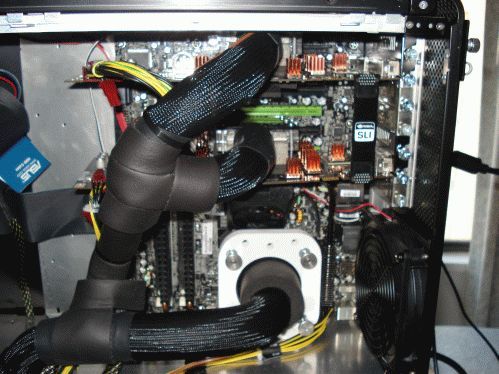
Today I have come across an article that i have found particularly interesting simply due to the fact that i have never seen much of this before, reading this article :http://searchnetworking.techtarget.com/definition/phase-change-cooling, I am astonished to see what heights and risks people are taking their expensive hardware towards. I know what you are probably thinking,
Is this going to be another blog post about more computers and chemistry mumbo jumbo that we have heard over and over and over again? NO, well yes, YES AND NO! Its more computers, its more chemistry, but its not the same! I am going to explain how you can keep your hardware below 0 degrees C and all with the use of just gas, (and various other complex components)!Today we are taking a look at phase change cooling, and first thing you might be thinking is, what the heck is that! Well, phase change cooling, which is also called vapor cooling in some cases is a microprocessor cooling technology, which works more or less the same way as your refrigerator at home. The base components for the cooling are a condenser, the vaporizer, the radiating element and the pump! Lets go over what each of them does, the condenser condenses a refrigerant gas into a volatile liquid, where the pump moves the liquid to the vaporizer, where the pressure is dropped and the liquid returns to its original gaseous state. Now that we know what each part does, how does it cool your CPU? When the liquid returns to is gaseous state, it rises to the CPU cooling block, where the thermal energy is absorbed from the processor and brought back down to the radiating element which in essence recycles the heated gas.This method of cooling is far more safer than liquid cooling, due to the fact that the liquid inside the loop is a gas and need high pressure in order to form into a potentially dangerous liquid, if a leak presents itself with a phase change cooler, the gas will simply be removed via the fans of your PC case, because of it very low evaporation point. While traditional liquid cooling usually uses more common liquids such as distilled water or other non-conductive fluids, and if those spill, your out of luck! I hope this helped you see just how effective gas can be when it comes to cooling PC hardware! My question for you dear readers is, why do you believe this method works more effectively than liquid cooling? I s it because its a gas taking away the heat? Let me know!
The idea of liquid cooling systems in computers makes some sense with the way developers are trying to take them. The regular vapour cooling systems must take up more space because allowing a substance to vapourize requires more space than keeping it as a liquid and will each new computer model being smaller than the last, we don’t really have space to spare.
ReplyDeleteI think that the Vapour cooling systems are better than the liquid systems because when something is in its gaseous state it holds a lot more energy than in liquid form, and is therefore able to remove more heat faster.